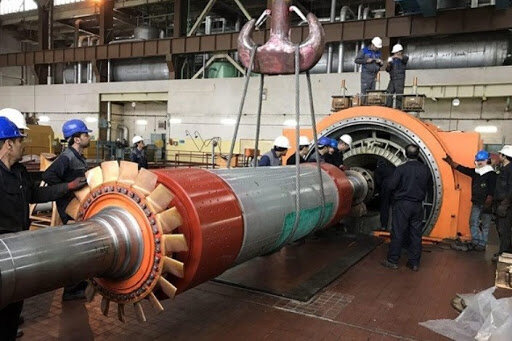Thermal power plants’ overhaul operation completed by 85%

TEHRAN- As announced by an official with Iran’s Thermal Power Plant Holding (TPPH), so far, 85 percent of the overhaul operation of the country's thermal power plants has been completed.
Naser Eskandari, the deputy head of TPPH for strategic affairs, said the management of repair programs and the cooperation of large thermal power plants have increased electricity generation and prevented further blackouts in the first two months of this Iranian calendar year (March 21-April 21).
Every year, in order to maintain the readiness of the power plants, the repair program is announced to these units, he said, adding that the power plants repairs are being carried out around the clock to reduce the number of blackouts, and the operations have significantly improved, especially compared to similar activities in previous years.
The management of repair programs and the cooperation of large thermal power plants, despite the problems and risks of repairs, have increased power generation and prevented further blackouts in the first two months of this year, the official repeated, announcing, “Most of the unimplemented programs are related to periodic visits, which in order to prevent the occurrence of accidents, we try to take these measures in coordination with the national dispatching, if necessary.”
In order to meet the country's consumption needs and prevent blackouts, the repair program was implemented in a highly managed manner compared to previous years, and this spring, thermal power plants will cooperate to compensate for the growing consumption needs to reduce blackouts in the country, Eskanadari further stated.
The current increase in the country's electricity consumption needs cannot be met with existing power plants, but the electricity industry subscribers are assured that thermal power plants will be in maximum generation circuit in the summer of this year, despite all the above issues, to take special measures for the reliable supply of electricity to consumers, he added.
Meanwhile, the head of Iran's Power Generation, Distribution, and Transmission Company (known as Tavanir) has announced that the company has defined 40 programs for maintaining electricity supply and preventing power outages during the hot season peak consumption period.
Mohammad-Hassan Motevalizadeh underlined early increase in the temperature and water shortage for hydropower plants as the most important challenges this year, saying: "These issues have forced the early implementation of preventive programs and in this regard, 40 programs have been prepared by Tavanir, and will be implemented across the country.”
Based on the mentioned programs, the responsibilities of various ministries and specialized parent companies have been determined and assigned, the official said.
He noted that the ceiling for incentive packages allocated to each province has also been determined and the governorates of the provinces have been notified in this regard.
“Government organizations and entities are the first priority for implementing consumption management programs, and in this regard monitoring and optimization of air conditioning and lighting systems in such offices should be seriously pursued”, he stressed.
According to the latest data provided by the Energy Ministry, currently, 55 hydroelectric power plants with a total capacity of 12,169 megawatts (MW) are operating across the country and the water shortage will seriously affect their output.
Iran’s current power generation capacity stands at about 85 GW of which the share of hydroelectric power stands at nearly 16 percent.
Water shortage in Iran has become a serious issue in the current Iranian calendar year (started on March 20) since the amount of rainfalls in the country have declined significantly in the current water year.
MA/MA

Leave a Comment